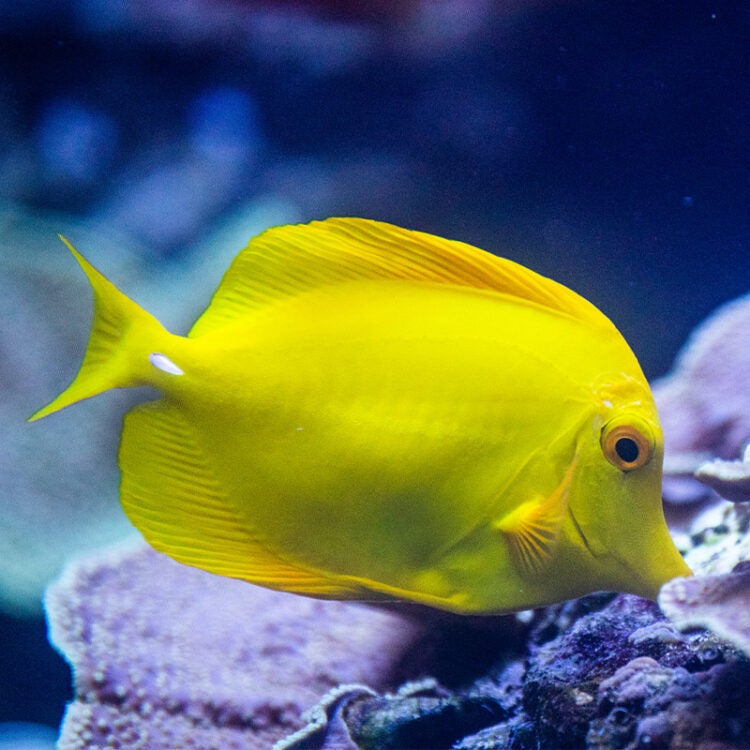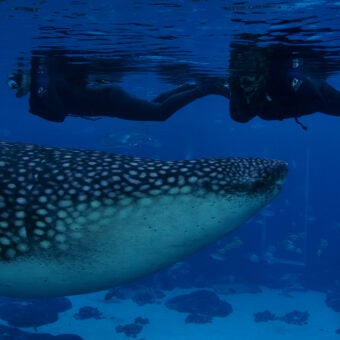-
Size
Up to 8 inches (20 cm) -
Diet
Algae -
Range
Pacific Ocean -
Habitat
Coral-rich tropical waters
Physical Characteristics
- Maximum length of 8 inches (20 cm).
- Characterized by a long snout and large dorsal fin.
- Coloration is a bright yellow, though at night changes to a darker and more subdued yellow with a visible white lateral line.
Animal Fun Fact
At night, the yellow tang's bright yellow coloration changes to a darker and more subdued yellow with a visible white lateral line.
Diet / Feeding
- Diet consists primarily of algae. Also feeds on macroalgae such as seaweed and occasionally eats types of zooplankton.
- Plays a crucial role in coral reef ecosystems by preventing algae from overtaking corals.
Range / Habitat
- Occurs in the Pacific from Japan to Hawaii.
- Found in coral-rich tropical waters at depths down to 250 feet (76 m).
Reproduction & Growth
- Spawns around the full moon in batches throughout the year, though mostly from March to September.
- Females release about 40,000 eggs.
- Clear larvae are planktonic, eventually making their way to coral reefs and crevices.
Conservation Status
- “Least Concern” on the IUCN Red List.
Additional Information
- Appears singly or in loose groups.
- Juveniles can be territorial.
- A diurnal species, they move from place to place during the day and rest alone at night in coral crevices.
- Though coloration appears bright to humans, it is negligibly different from the color of coral at common depths.
- Uses a scalpel-like fin defensively.





